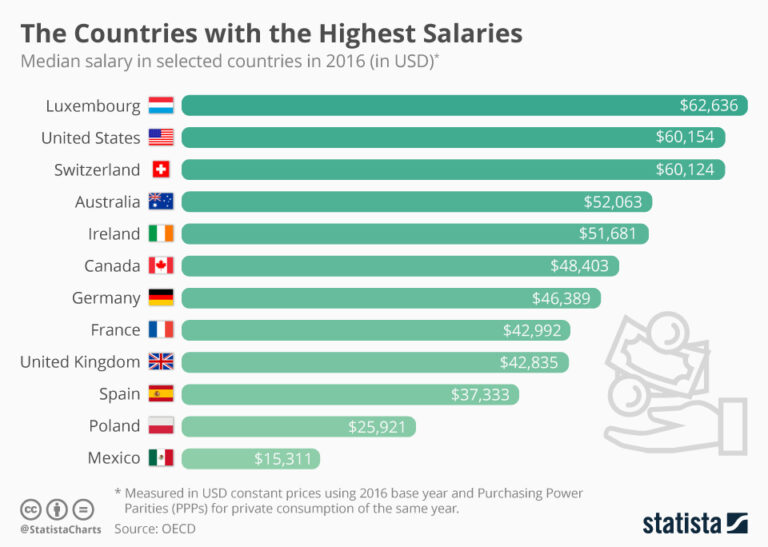What Are 3 Advantages Of ETFs?
Exchange-traded funds (ETFs) are a popular investment tool among investors due to their low costs, diversification, and liquidity. ETFs are a type of fund that tracks an index, multiple indices, or a basket of assets like stocks, bonds, or commodities. ETFs offer investors the opportunity to diversify their portfolios, access certain markets, and take advantage of asset classes that may be difficult to access through an individual stock purchase. Additionally, ETFs provide investors with the opportunity to manage their investments more actively than with traditional mutual funds. Here are three advantages of ETFs that investors should consider:
1. Low Costs: ETFs typically have lower management fees than traditional mutual funds, which makes them a cost-effective way to gain exposure to certain markets. Additionally, ETFs often have lower trading costs than individual stocks, making them a cost-effective way to diversify a portfolio.
2. Diversification: Since ETFs contain a basket of assets, they provide investors with the opportunity to diversify their portfolios with a single investment. This allows investors to minimize risk and spread out their investments across different asset classes.
3. Liquidity: ETFs are highly liquid investments, which makes them easy to buy and sell. This makes them an ideal investment for those who need to access their funds quickly or who want to actively manage their portfolios.
Definition of Exchange Traded Funds
Exchange Traded Funds (ETFs) are a type of investment fund that is traded on a stock exchange. They are similar to mutual funds, in that they hold a basket of assets such as stocks, bonds, and commodities. However, ETFs are more cost effective, more tax efficient, and more liquid than mutual funds. ETFs also provide instant diversification and are easily accessed through an online brokerage account. ETFs have become increasingly popular with investors due to their low cost, flexibility, and ease of use. Whether you are a beginner investor or an experienced one, ETFs can offer an attractive option for building a diversified portfolio.
Benefits of Investing in ETFs
Investing in ETFs (Exchange Traded Funds) provides investors with a number of advantages that make these funds attractive. ETFs offer a low-cost, diversified portfolio with easier access to a wide variety of asset classes. They also offer the convenience of trading the same way stocks are traded, which means investors can buy and sell them quickly and easily. ETFs offer tax efficiency since they generally have much lower turnover than actively managed funds, resulting in lower capital gains taxes. Additionally, ETFs allow investors to invest in asset classes that may be difficult to access through other investment vehicles. ETFs also provide a more transparent portfolio since they are composed of a basket of securities that are known to the investor. With ETFs, investors can easily monitor their portfolio and make adjustments whenever necessary.
Low Cost
When it comes to your budget, there’s no need to break the bank – low cost living can be achievable without compromising on quality. Low cost living is all about making smart decisions and finding creative ways to save money on everyday expenses. From shopping around for the best deals to cutting back on unnecessary purchases, there are countless strategies you can use to keep your budget in check. Whether you’re a student, a working professional, or a retiree, low cost living can help you get the most out of your money – while still having a little fun!
Diversification
The concept of diversification is an important part of business and financial planning. It is a method used to reduce risk and improve returns on investments. By diversifying your investments, you can help to manage the risks associated with investing in one particular asset or sector. By spreading your money across different investments, you’ll be able to lower the risk associated with any one investment. Diversification is also important in terms of building a portfolio of assets. A diverse portfolio is one that contains a wide variety of investments, both domestic and international, and provides the opportunity for greater returns in the long run. By diversifying, you can help to minimize the risks associated with any one investment and maximize the potential for gains.
Tax Efficiency
Tax efficiency is a financial strategy that minimizes the amount of taxes you pay. It involves utilizing tax laws, credits, and deductions to your advantage so that you can keep more of your hard-earned money. Tax efficiency involves planning ahead to take advantage of available deductions and credits that can help you reduce your overall tax burden. It also requires understanding different types of investments and their tax implications in the context of your financial goals. Tax efficiency isn’t just a strategy for wealthy individuals – anyone can benefit from understanding how to reduce their taxes. With smart planning, you can maximize your money and keep more of what you earn.
Popular ETFs
Exchange Traded Funds (ETFs) are becoming increasingly popular as an investment vehicle for those looking to diversify their portfolios. ETFs offer a low-cost way to gain exposure to a variety of asset classes, such as stocks, bonds, commodities, and currencies. They provide broad diversification, which helps mitigate risk while providing investors with the potential for better returns. ETFs are easy to trade, liquid, and offer tax-efficiency benefits compared to other investments. Popular ETFs are often large and liquid, enabling investors to access different markets and sectors quickly and efficiently. ETFs are a great way to invest, given their low-cost structure, diversity, and flexibility.
Strategies for Investing in ETFs
Exchange-traded funds (ETFs) are an increasingly popular investment option for many investors. ETFs offer a combination of diversification, low costs, and passive management, making them an attractive choice for those looking to take advantage of the stock market without taking on too much risk. Investing in ETFs requires proper strategy in order to maximize returns and minimize risk. Strategies for investing in ETFs include diversifying across sectors, balancing between growth and value stocks, understanding the risks associated with different types of ETFs, taking a long-term approach, and actively managing your portfolio. By utilizing a sound ETF investing strategy, you can achieve your financial goals while minimizing your risk.
Drawbacks of Investing in ETFs
Exchange-traded funds (ETFs) are becoming increasingly popular as a way to diversify investment portfolios. While ETFs may offer lower costs and tax efficiencies compared to other investments, they also come with certain drawbacks. ETFs typically have high trading costs, and the underlying assets may be illiquid or hard to value. Investors should also be aware that ETFs may not provide the same level of diversification benefits as mutual funds or individual stocks. Additionally, ETFs may be subject to greater price volatility due to the underlying assets’ liquidity. Finally, ETFs may be subject to greater market risk, since they are tied to the performance of the underlying assets. For these reasons, investors should carefully consider their risks before investing in ETFs.
Conclusion
The blog section is a great way to keep your readers informed about the latest news and events in your industry. Not only does it provide an opportunity to share valuable content with your readers, but it also helps to establish your brand as an authority in your field. A well-written blog can help to drive organic traffic to your website, while also helping to build relationships with your readers. At the end of the day, the goal of your blog should be to engage readers and provide them with helpful information. A successful blog section should be updated regularly, include a mix of content types, and provide readers with an enjoyable reading experience. By incorporating these elements into your blog, you can create an effective platform that will help you to reach your desired goals.
FAQs About the What Are 3 Advantages Of ETFs?
1. What are the advantages of ETFs compared to mutual funds?
Answer: ETFs typically have lower costs, greater tax efficiency, and more flexibility than mutual funds. ETFs also have the added benefit of being able to be traded intraday, while mutual funds are only priced once per day.
2. How liquid are ETFs?
Answer: ETFs are highly liquid investments that are easy to buy and sell. ETFs are also traded on major stock exchanges and can be bought and sold during normal market hours.
3. Are ETFs an appropriate investment for long-term goals?
Answer: Yes, ETFs can be an appropriate investment for long-term goals. ETFs offer diversification, low costs, and flexibility that can make them a desirable choice for many investors.
Conclusion
Overall, ETFs are a great way to access a variety of markets and asset classes, while also providing investors with a cost-effective and tax-efficient way to diversify their portfolios. Additionally, ETFs have the potential to generate higher returns than traditional mutual funds and provide investors with more control over their investments. ETFs are also more liquid than mutual funds, making them an attractive option for investors who want to enter or exit the market quickly. With all of these advantages, it’s no wonder that ETFs have become increasingly popular among investors.



